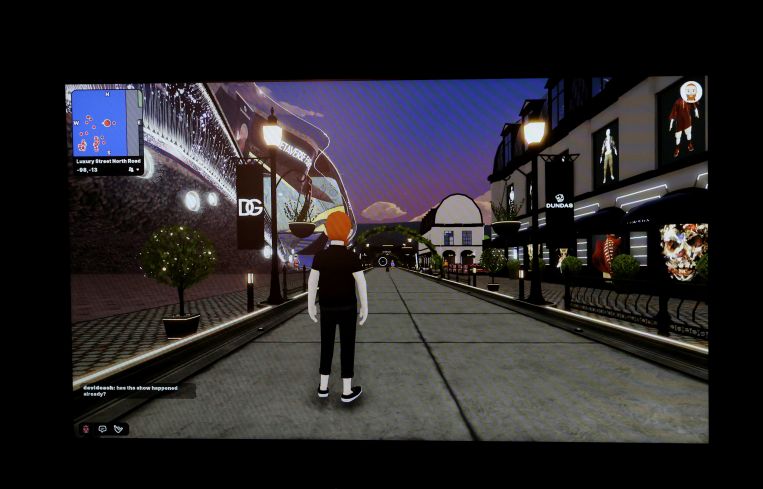Real Estate Is Just Not That Into the Metaverse . . . Yet
The hype has blown over, but proptech players say virtual property still has utilitarian uses and a future
By Philip Russo April 11, 2023 8:55 am
reprints
Last year’s highly anticipated virtual land rush into the metaverse has yet to materialize, but sluggish participation and little profit from the alternative not-so-real-estate world hasn’t caused its enthusiasts to pull up stakes, according to proptech experts.
Real estate in the metaverse has not yet produced a brave new world of speculation and riches akin to the mercurial markets of cryptocurrencies and NFTs. But it has begun to demonstrate actual utility for real property by combining hardware and software such as augmented reality (AR), virtual reality (VR), and digital twinning to produce powerful marketing and development functions.
First, though, we had to get over the “hype cycle,” said Luke Graham, head of research at Pi Labs, a London-based early-stage proptech venture capital firm.
“We published a research paper 12 months ago called Unreal Estate, which was really in the throes of the hype cycle, and that was quite intentional,” said Graham. “We did see excessive hype. One fascinating point was that there were virtual land platforms selling at a higher price per square foot than actual real estate. And, if you were looking at agricultural land, it was several times as expensive, rivaling high-end real estate in the middle of cities like London and New York. Given the low levels of traffic and traffic growth, that was obviously something very unstable, and we’ve seen that really come off the boil.”
Getting past the hype, there is now greater excitement about the “increased adoption and interest around virtual tools” and the metaverse, Graham said. “There’s a massive debate around whether digital twins fall into the metaverse conversation, as well as the use of mixed reality in the built world for augmenting physical spaces or replacing them.”
Real estate transactions within the metaverse are also trying to gain traction.
“There’s definitely still transactions happening and parcels trading hands, but not a lot of activity,” said Zach Aarons, co-founder and general partner at Manhattan-based proptech venture capital firm MetaProp.
He added that there are only “tens of thousands of people” in the real estate metaverse, compared to many millions on the virtual world’s gaming sites. “I’m not talking about the game sites like Roblox and Fortnite, but if you look at the metaverse where people can buy land, I would say the two main crypto ones are The Sandbox and Decentraland, and the main non-crypto one is Second Life.
“I think Second Life, through this whole mayhem, has been pretty consistent in terms of transactions. I don’t think their ecosystem was impacted by a lot of speculation during the boom, nor do I think there’s been a lot of air let out of the balloon. I think they have probably the same amount of transactions now as there were during the boom.”
The so-called metaverse boom came in 2020 and 2021. Facebook set the pace, changing its name to Meta in anticipation of the next wave of virtual live, work and play online communities. In March, that same Meta announced it would cut another 10,000 jobs, 13 percent of its workforce, after conducting 11,000 layoffs in November 2022. The cuts were seen by many as a major metaverse no-confidence vote by the company.
In addition, earlier this year Disney and Microsoft announced pullbacks from the metaverse.
Despite such announcements, individual metaverse real estate investors who speculated on parcels are still to be found.
“I haven’t made any money because I haven’t sold any of the land I purchased, but I did purchase Sandbox land at its initial offering, which I believe was a couple hundred dollars at the time,” said Daniel Yurcho, founder and CEO of Consult Web3, a Frederick, Md.-based startup that consults with companies about the blockchain, NFT and gaming. “It was really next to nothing. Now those plots would probably be worth about $1,700 if I were to sell it at the current value, so I would make a good amount of money, but of course I don’t want to sell it with the market being where it currently is.”
Yurcho said he entered the market “100 percent speculation-based,” believing that his plots’ value would increase over time. His purchases in The Sandbox were near larger plots of land owned by big businesses that he anticipated would become more popular, increasing his land’s worth and enabling him to flip the parcels at profit.
Although his investments’ current worth has exceeded his expectations, it’s been a roller coaster ride, said Yurcho. “In 2020 and 2021, I was saying, ‘Wow! I’m a genius.’ And last year I was saying, ‘Wow, I’m an idiot.’ So I go back and forth. But I’ve been heavily invested in crypto and blockchain, and it makes sense to diversify.”
Despite some interest in his consulting work on the metaverse from some retailers, Yurcho has not found much overall interest in the realm from traditional real estate companies.
“I haven’t seen the interest so much from real estate firms,” he said. “It’s been brands who are looking to sell something or to market a product that think that this will benefit them most in the future. But I haven’t seen any digital real estate firms pop up. And I think that if they were to have popped up in 2021, they would have experienced such incredible losses that they might be rethinking their strategy or failed to be a business at that point because right now it’s really all speculation. People shouldn’t be investing anything that they couldn’t afford to lose because it’s so early in the process.”
One tangible use of the metaverse is to market and build brand awareness around products through their connection to virtual retail real estate sites, said MetaProp’s Aarons.
“Snapple just created their own store in Decentraland and did an activation in the same way they would do an activation event at a grocery store in the terrestrial world,” Aarons said. “Only difference is that you can’t actually taste it. So the idea with buying real estate is you would own places where that type of activity happens and collect fees from brands.
“In Decentraland, the idea of location, location, location makes sense because of the way people navigate through it. You can’t just click in and out. You have to actually walk through it. Whereas, it is debatable how valuable location is in a metaverse like The Sandbox, where you can just point and click out of anywhere you want. You don’t have to walk through it. So it’s totally different. But honestly, the vast majority of what happens in these metaverses at this point is brands doing fashion shows, digital activations, stuff like that. It’s a lot of advertising, a lot of events, some concerts, not a whole lot of anything else.”
The coupling of the metaverse with AR/VR technology may become a key factor in the growth of virtual real estate worlds, said Jyotika Singh, director of data science at Placemakr, a tech-enabled, flex-use hospitality and multifamily operator based in Washington, D.C.
“The metaverse in real estate is still an emerging concept that pertains to a virtual world that is interconnected with the physical world facilitated by augmented reality and virtual reality,” Singh said in a statement. “There are numerous examples of how the metaverse is connected to the real estate industry, including the use of virtual property tours and property staging.”
Like Aarons and Yurcho, Singh pointed out the value of property location, even in the virtual world.
“Sandbox is reported to own more than 60 percent of the metaverse real estate market,” she said. “Sandbox’s land was estimated to be worth $167 million in 2022. There is a direct purchase market, as well as a thriving secondary market where prices can be multiple times higher. An interesting example is that following Snoop Dogg’s acquisition of land parcels in the Sandbox, which he named ‘Snoopverse,’ a buyer paid $450,000 just to become his neighbor.”
Speculative metaverse transactions aside, some architects, engineers, landlords and real estate developers are tentatively employing the virtual world in planning actual projects.
“I think architects are being asked for it and developers are starting to test stuff out,” Aarons said of using the metaverse to visualize projects before real-world building. “I don’t think there’s a ton for me to be doing directly. I don’t know if there’s a company to be built that does this, but it’s definitely something we’re paying attention to.”
Overall, Aarons declared himself “neutral” on the future real estate uses of the metaverse.
“When the hype was happening, I was more bullish than most people on the functional aspects of it and more bearish than some people on the speculative aspects of it,” he said. “Now that everyone’s bearish again on the speculative financial aspects of it, I would have to say that a contrarian thing to do would be to be bullish on it.
“But I’m definitely bullish on the utility of these kinds of virtual experiences as it relates to the real estate world, but not so bullish where we’re actively looking to fund a company that does it, or incubate companies that do it.”
Nor has Aarons seen significant growth in real estate and proptech’s relationship to the metaverse.
“It’s the same,” he said. “That’s sort of the frustrating part. It’s the same amount of flux and not a lot of new stuff going on, unfortunately.”
Philip Russo can be reached at prusso@commercialobserver.com.


